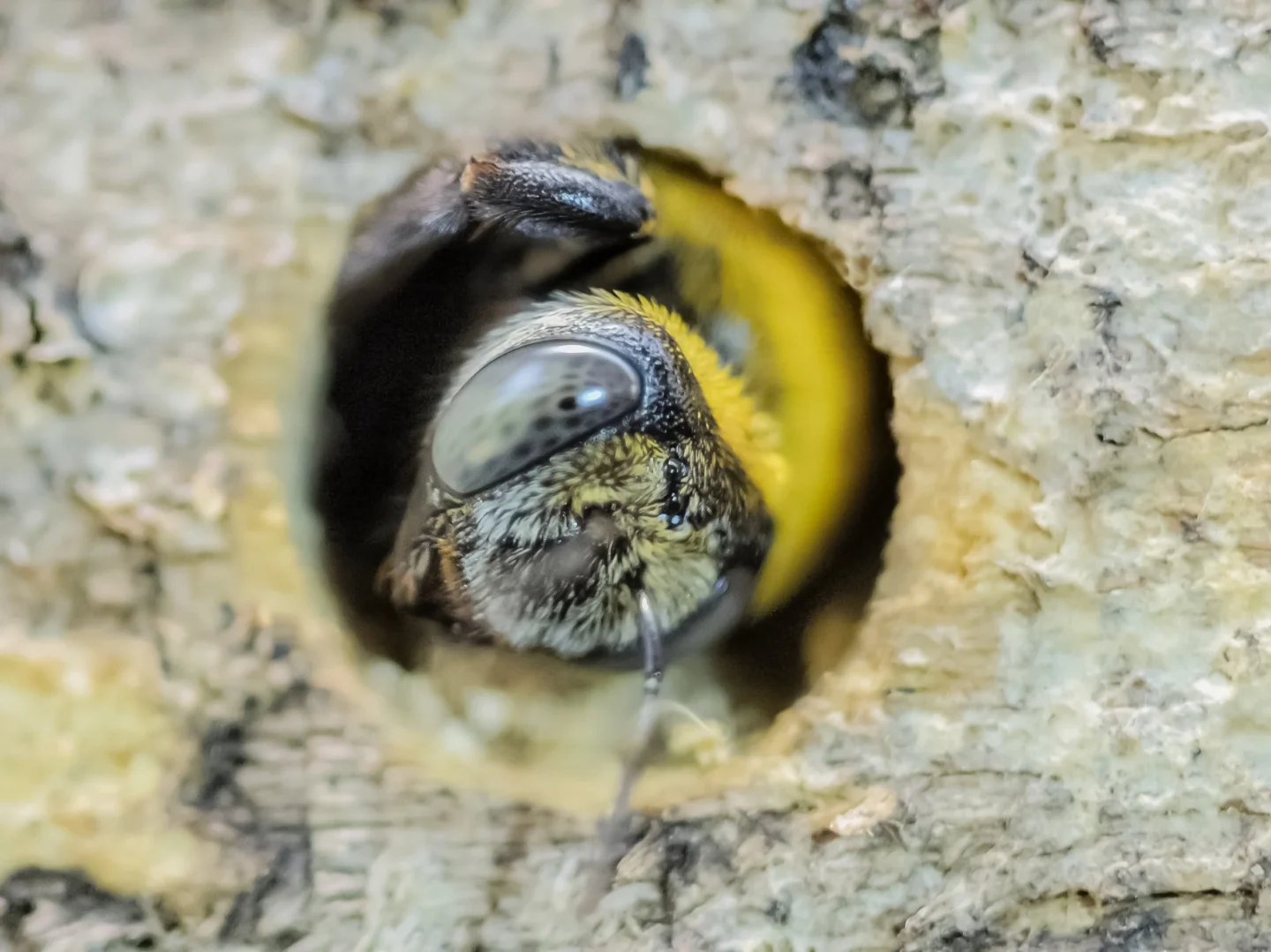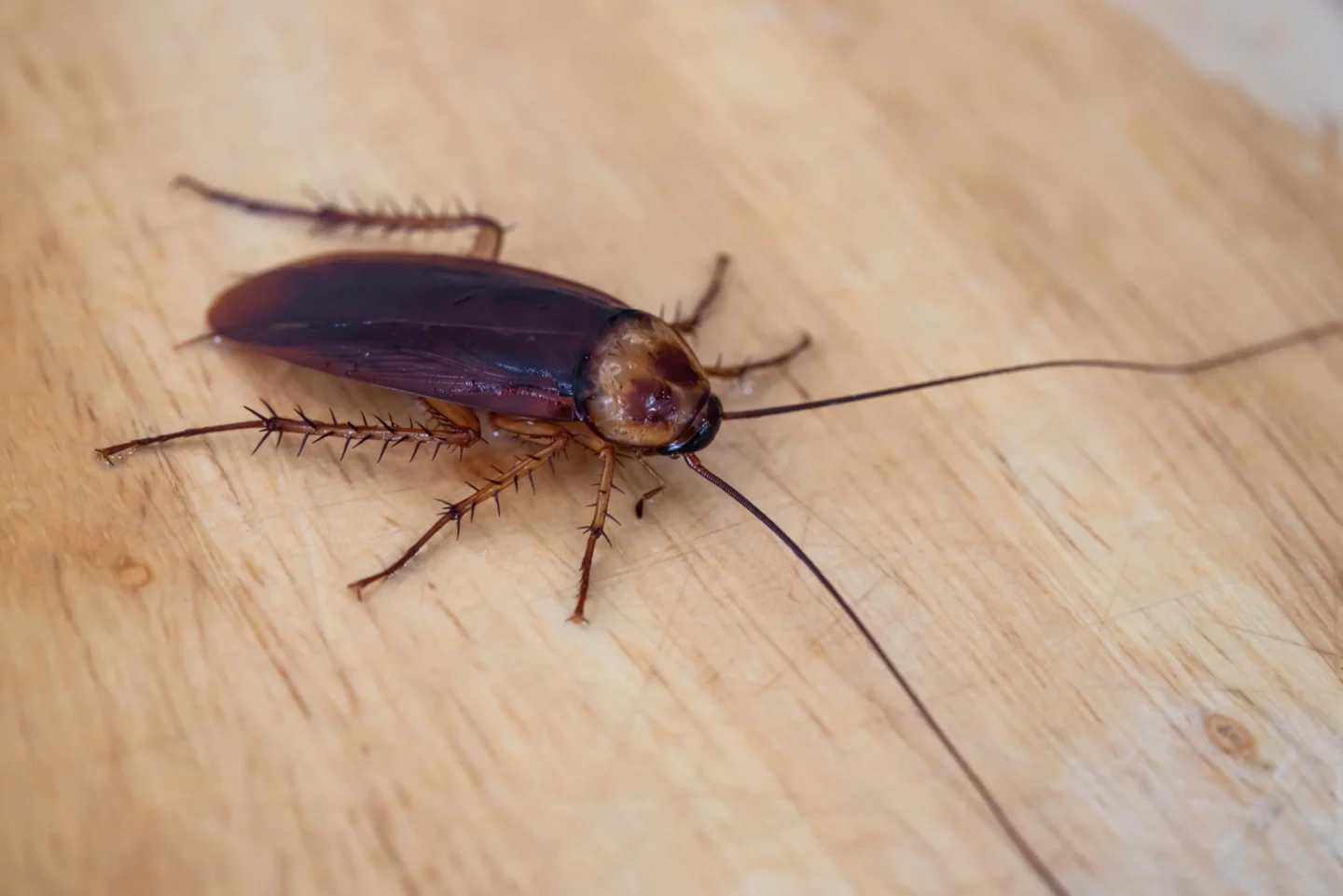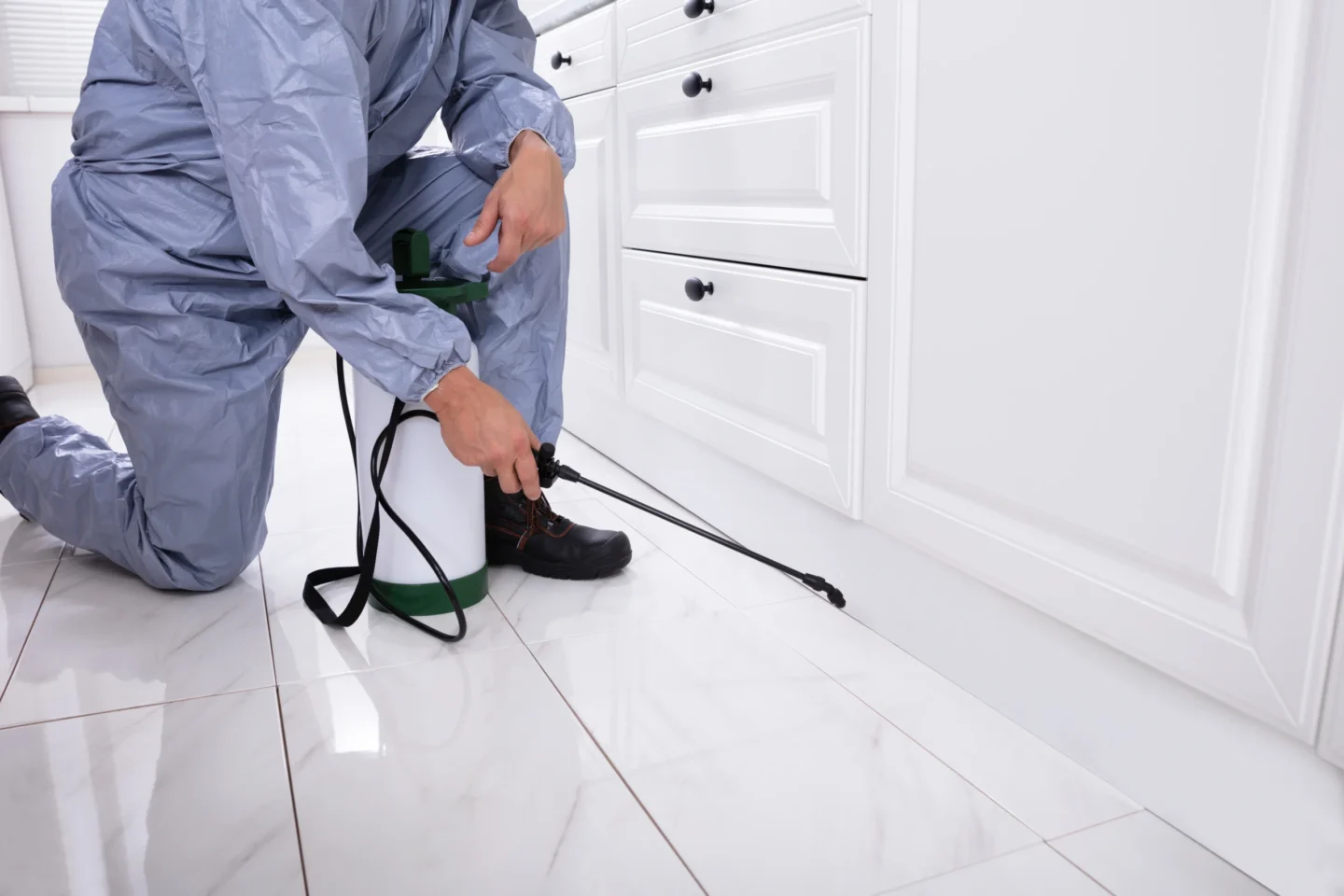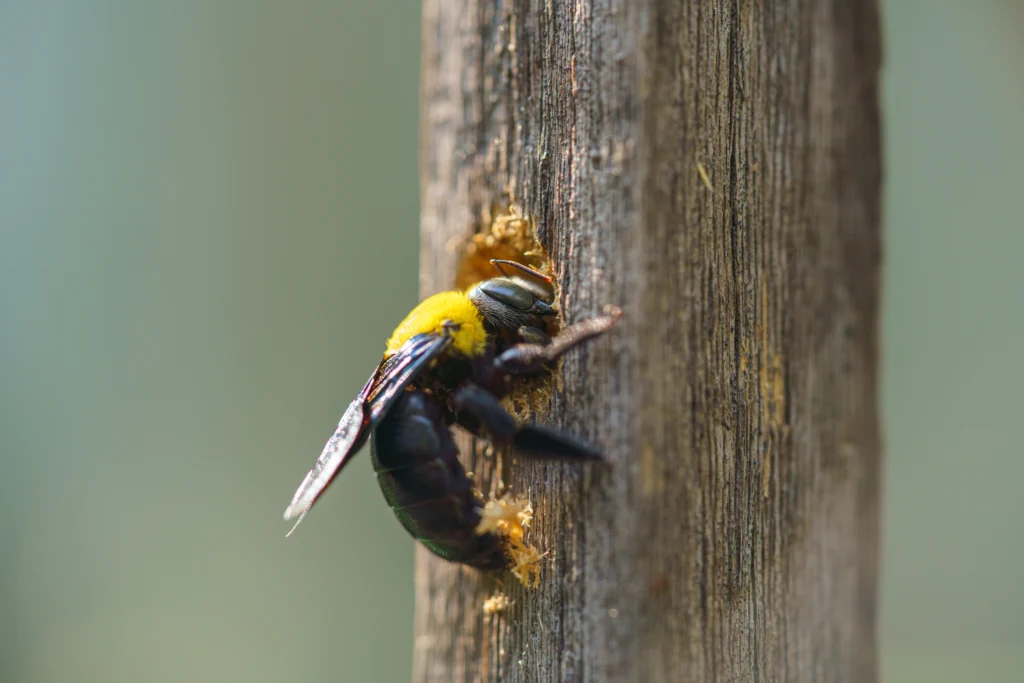
Carpenter bees might look harmless at first glance, resembling bumblebees in size and color. But don’t be fooled, these wood-boring insects can cause significant structural damage over time if left unchecked. Unlike termites, carpenter bees don’t eat wood. Instead, they tunnel into it to create nests, leaving behind a trail of warning signs that every homeowner should know. If you suspect they’ve made a home in your property in Maryville, IL, spotting the clues early can help you take quick action. Here are the most common signs of carpenter bees around your home.
Perfectly Round Holes in Wood
A clear sign that carpenter bees are around is the presence of small, perfectly round holes, usually about the size of a finger or a bit smaller. These holes are clean and perfectly circular, as if drilled with a bit, and are most often found in untreated or unpainted wood. Common target areas include eaves, fascia boards, decks, railings, and wooden siding. If you notice one or more of these holes, especially in sunny or sheltered areas, there’s a good chance carpenter bees are nearby.
Sawdust or “Frass” Underneath Holes
Carpenter bees create tunnels that can stretch several inches to over a foot long. As they bore through the wood, they push out the wood shavings behind them, which often collect in small piles directly beneath the hole. This sawdust, known as “frass,” is usually light in color and looks fresh. Finding frass on your deck, porch, or windowsill is a strong indication that bees are actively tunneling above.
Buzzing Sounds Inside Wood Structures
If you’ve ever stood near an active carpenter bee nest, you may hear a faint buzzing or scratching noise coming from inside the wood. This sound is created by the bees as they chew and move through the tunnels. The noise is often most noticeable during warm daylight hours I n Maryville, IL when bees are actively working.
Bee Sightings Near Wooden Surfaces
You can expect to see adult carpenter bees during the spring and summer months. If you frequently see large bees hovering near your wooden structures, especially if they seem to be flying in and out of the same spot—they’re likely nesting. Males, which can be aggressive but don’t sting, often patrol nest sites to guard them, while females do the drilling.
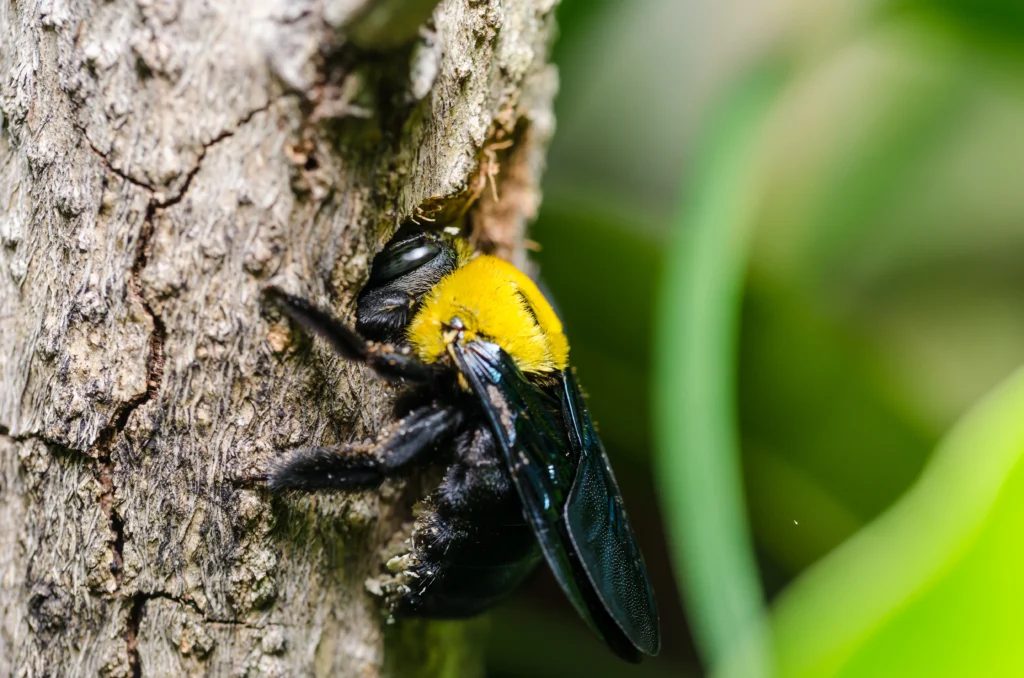
Yellowish Stains Near Nesting Sites
As the bees work and move in and out of their holes, they can leave behind dark yellow or brown stains around the entrance. These marks are created by their waste, and it can help you identify tunnels created by them. If you see discolored streaks around a hole, it may mean the nest has been in use for a while.
Be sure you call American Termite & Pest Control if you have carpenter bees damaging your Maryville, IL home.

